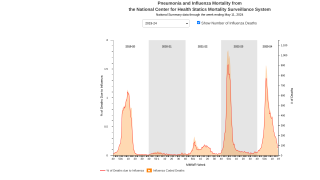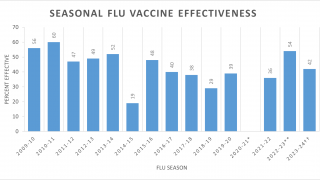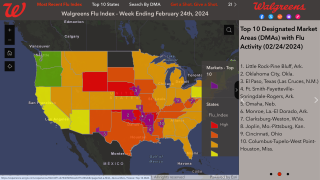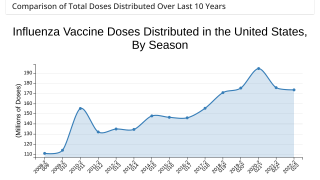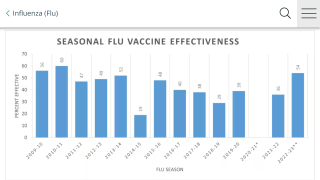Influenza No-Showed For the Southern Hemisphere’s Flu Season

This year's flu season in the Southern Hemisphere was weirdly mild, reported NPR.
As of August 29, 2020, a surprisingly small number of people in the Southern Hemisphere have gotten the flu this year, probably because the public health measures put in place to fight COVID-19 have also limited the spread of influenza viruses.
That makes public health experts hope that the USA and other northern countries might be spared the double whammy of COVID-19 and an intense 2020-2021 flu season.
Still, health leaders say people still need to get vaccinated against the flu.
Influenza vaccines, known as flu shots, protect people against the influenza viruses that research indicates will be most common during the upcoming season.
"We are sort of seeing very little influenza activity in the Southern Hemisphere, but that doesn't allow me to predict that that will be the case for the Northern Hemisphere,” said Kanta Subbarao, director of the World Health Organization's Collaborating Centre for Reference and Research on Influenza in Melbourne, Australia, in a statement.
The tropics around the globe's equator can have flu year-round. The temperate zones of the north and south, in contrast, see cases of seasonal influenza rise and peak during the winter.
That means doctors in the Southern Hemisphere typically start seeing flu in May or June. The number of infections there is greatest in July or August. In the Northern Hemisphere, cases start to rise in the fall and peak between December and February each year.
That's why, as COVID-19 started spreading earlier this year, public health officials in the southern parts of the world worried that their health care systems would soon be overwhelmed. Just when they were expecting to see the normal burden of hospitalizations of seasonal flu, this new respiratory illness could be upon them.
"The countries took it very, very seriously," says Sylvain Aldighieri, the incident manager for COVID-19 with the Pan American Health Organization. "They bought more vaccine, they vaccinated more people during the pre-flu season."
Flu hasn't totally disappeared, but it's way down.
For example, consider various clinical samples that were taken from patients with an acute respiratory illness during a 3-week period in the middle of winter in Chile.
"Zero were positive for influenza," Aldighieri says, explaining that he'd normally expect to see hundreds test positive for flu.
Chile isn't alone. Other countries are having a similar experience.
"Based on what we've seen in the Southern Hemisphere, and I would say this is true of all through the Southern Hemisphere — South America, Africa, Australia, New Zealand, all across this region — there's been very little influenza activity," Subbarao says.
Recently, the WHO's Influenza Update #374 indicated the Southern Hemisphere's flu season hasn't started yet. As of August 17, 2020, sporadic influenza outbreaks have been detected in the Caribbean, Central America, and tropical parts of South America and Africa.
According to the U.S. CDC, the most common flu shot for the 2020-2021 influenza season in the Northern Hemisphere are quadrivalent vaccines that protect people against 4 viruses; influenza A (H1N1) virus, influenza A (H3N2) virus, and 2 influenza B viruses.
Click here for detailed information about the various flu shot options.
Vax-Before-Travel publishes research-based international travel news.
Our Trust Standards: Medical Advisory Committee














